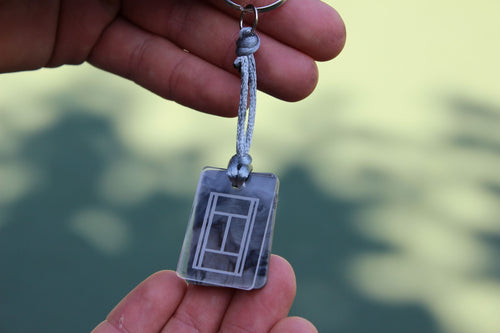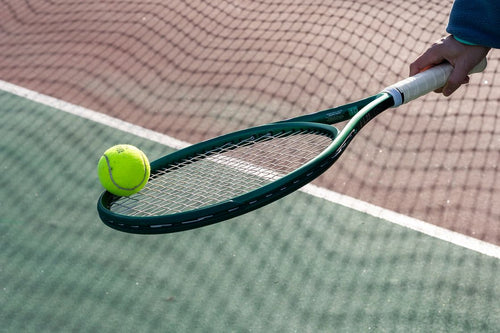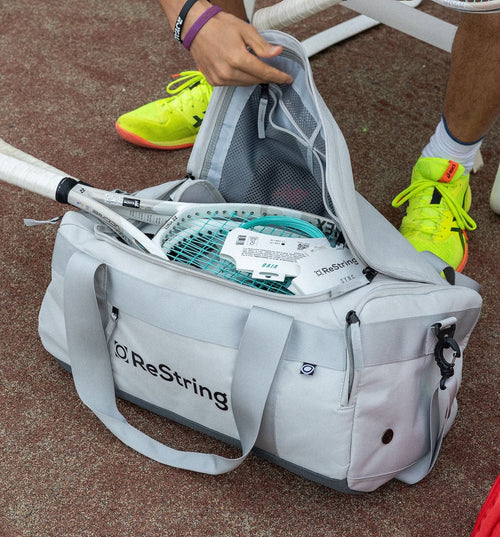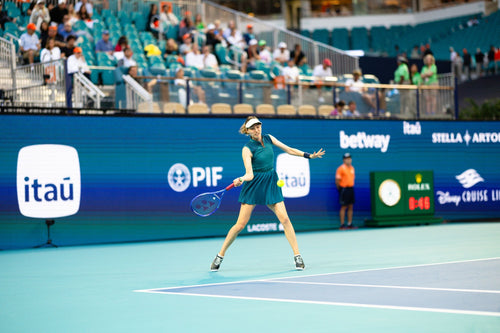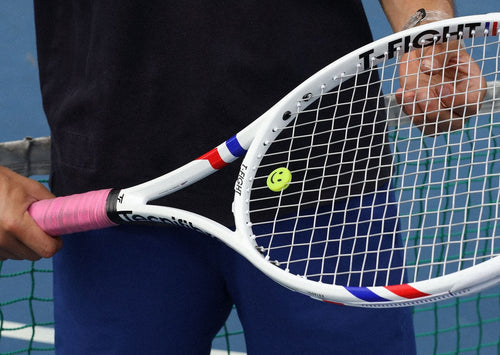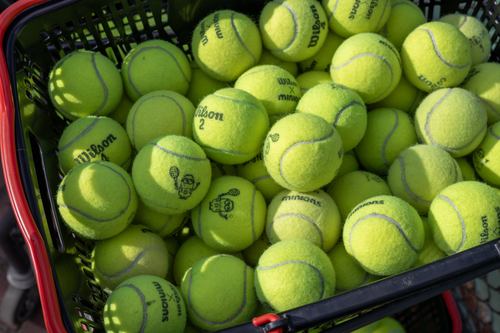Recycled Polyester Tennis Strings: A Complete Guide
Juan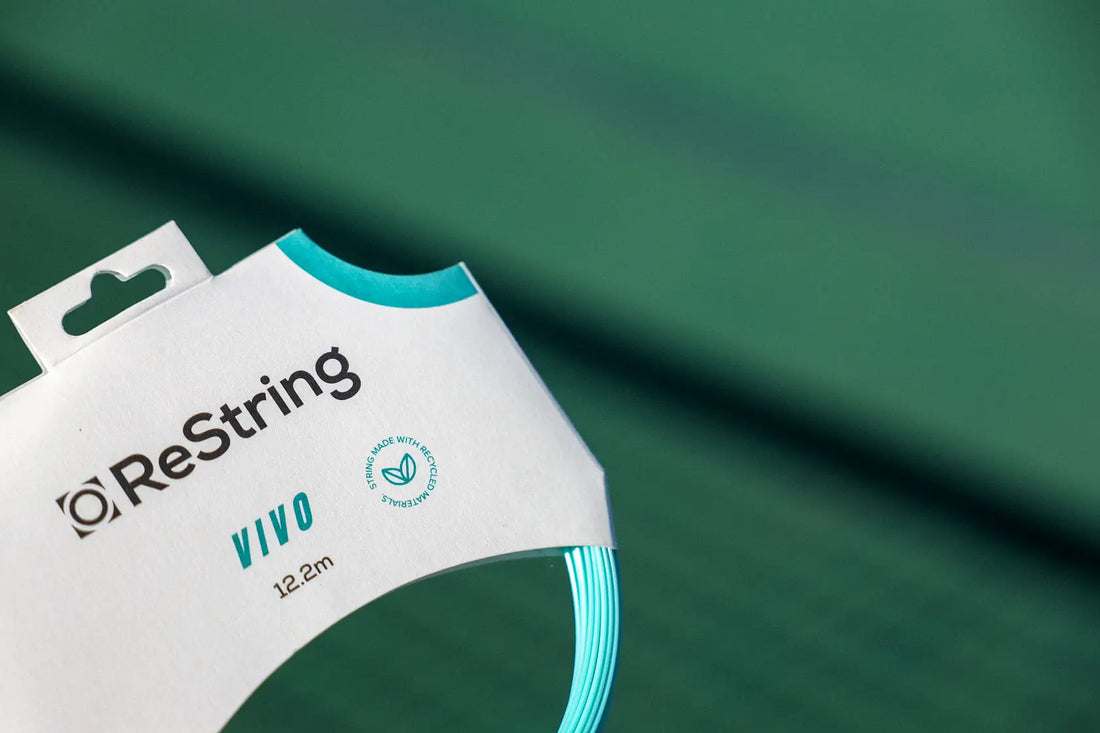
At Wimbledon alone, technicians string around 2,000 rackets with over 40 miles of string.
Most of these miles are polyester strings, which often get discarded after a single match.
And that’s just for a few hundred players. When you consider there are millions of tennis players worldwide, the scale of the environmental waste problem becomes staggering.
However, recycled polyester tennis strings offer a promising solution.
By repurposing existing plastic waste into high-performance strings like Vivo, manufacturers can reduce environmental impact while still delivering the playability players demand.
In this article, you'll discover what recycled polyester strings are, how these sustainable strings are manufactured, and how their performance is starting to catch up to virgin polyester strings.
What Are Recycled Polyester Tennis Strings?
Polyester tennis strings have revolutionized tennis. Almost every professional player on tour today uses polyester strings in their racket, either as a full bed or in a hybrid setup.
The popularity of these strings stems from their ability to provide control, durability, and most importantly, spin potential that helps players generate heavy topspin.
However, the tennis industry faces a significant waste problem. Traditional polyester strings, made from virgin plastic materials derived from petroleum, contribute to environmental concerns.
As players become more environmentally conscious, many are seeking sustainable alternatives that don't compromise on performance.
This is where recycled polyester tennis strings enter the picture. These innovative strings are manufactured using recycled PET (polyethylene terephthalate) materials, known as rPET.
By repurposing plastic waste into high-performance tennis strings, manufacturers can reduce their environmental footprint while still delivering the playing characteristics that modern players demand.
At ReString, our newest innovation Vivo exemplifies this progress. Made from a recycled polyester base, Vivo offers environmentally conscious players high-performance strings without compromise. This is alongside our other sustainable initiatives.
How Recycled Polyester Strings Are Made
The manufacturing process of recycled polyester tennis strings begins with the collection and sorting of plastic waste, which typically includes PET bottles and other post-consumer plastic products that would otherwise end up in landfills or the ocean.
Once collected, these materials undergo rigorous cleaning and processing to remove contaminants. This is a critical step, as any impurity in the material can affect the final performance of the tennis string.
After cleaning, the plastic waste is broken down into small flakes. Then, the flakes are melted and extruded into a fiber. This fiber forms the base material for the tennis string. The extrusion process is particularly challenging when working with recycled materials due to potential inconsistencies in the source material.
First-Generation Recycled Strings
The first attempts at creating recycled polyester tennis strings represented important steps toward sustainability in tennis.
However, these early versions often struggled with performance issues. Players typically reported poor playability, inconsistent tension maintenance, and reduced durability compared to traditional polyester strings.
These limitations created a perception that environmentally friendly options couldn't match conventional polyester performance. This made it challenging for players who wanted to make more sustainable choices without compromising their game.
ReString Vivo: Performance First rPET
Vivo enters the market with a fundamentally different approach to recycled polyester strings. Unlike previous attempts, Vivo was designed as a performance-first string, with sustainability as an integral benefit.
This philosophy is captured in our Vivo slogan: "All out on Performance. All in on Sustainability."
Vivo offers a combination of control and spin that modern players demand. The string also delivers direct response and solid feel on impact that gives reliable performance.
What makes Vivo truly unique is that players often cannot tell they are using a recycled product. During our testing phase, we intentionally withheld information about Vivo's recycled composition from playtesters. When later informed that they had been playing with strings made from recycled materials, testers were genuinely surprised by the level of performance.
TennisNerd has provided positive feedback on Vivo's performance characteristics, further confirming that recycled materials can indeed deliver premium playing experiences.
Conclusion
The evolution of recycled polyester tennis strings represents a significant step forward for sustainability in tennis without compromising performance.
While early attempts at recycled strings faced challenges with playability and durability, modern innovations have bridged the gap between environmental consciousness and high performance. The manufacturing process has advanced to transform plastic waste into high quality tennis strings that can compete with traditional polyester options.
Experience the perfect balance of performance and sustainability for yourself with Vivo.





